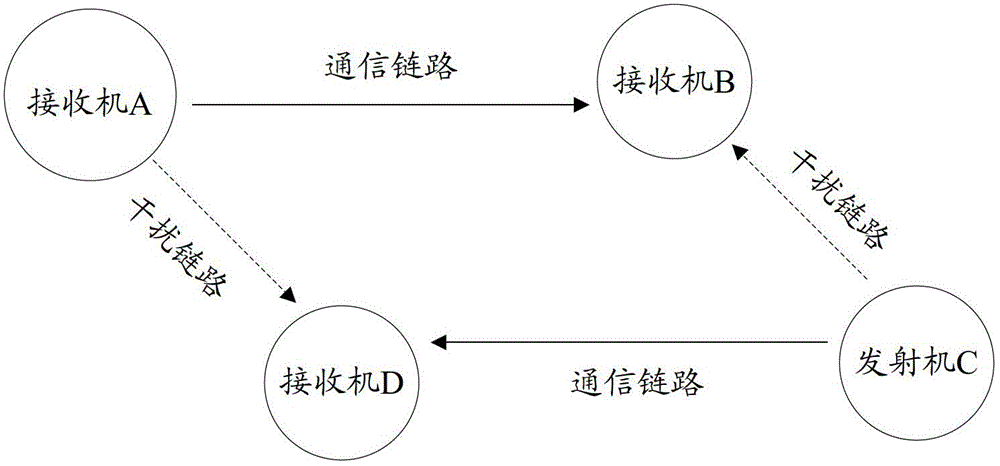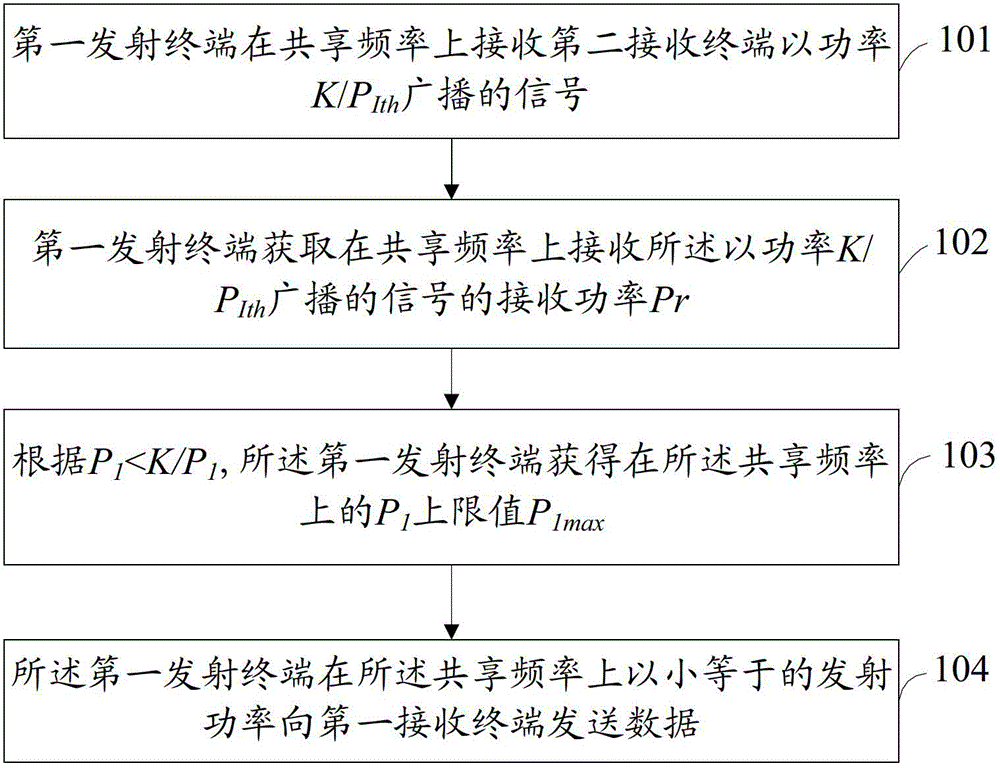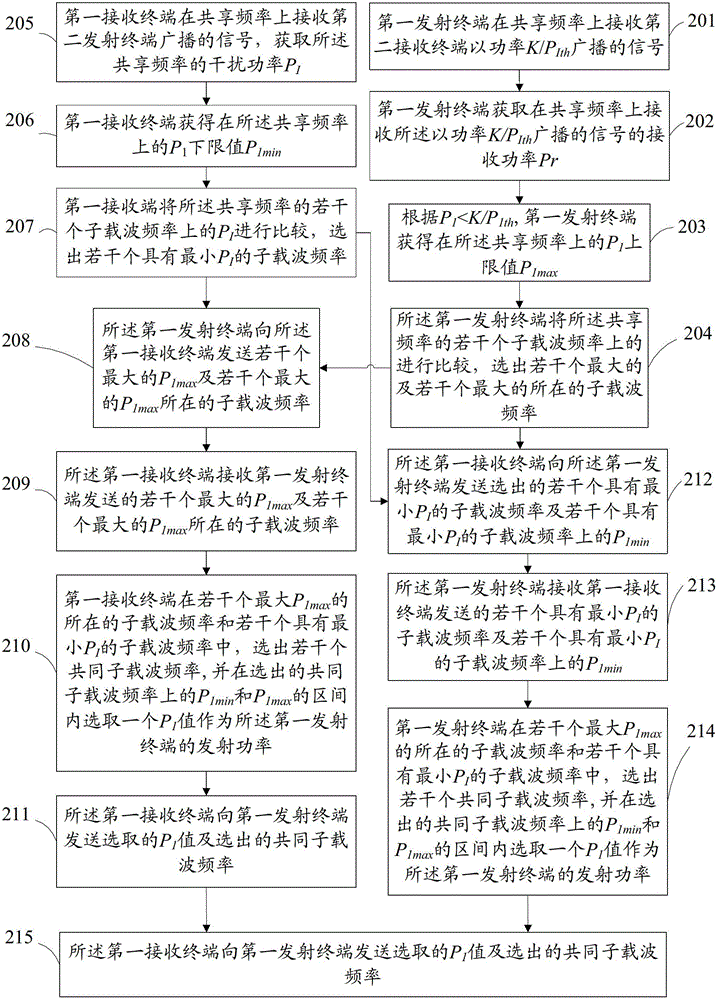Disturbance control method, terminal and system based on distributed wireless network architecture
A wireless network and interference control technology, applied in wireless communication, network planning, electrical components, etc., can solve the problems of not being able to know the minimum SIR of the communication link, and being unable to determine whether to send data, etc.
- Summary
- Abstract
- Description
- Claims
- Application Information
AI Technical Summary
Problems solved by technology
Method used
Image
Examples
Embodiment 1
[0049] Such as figure 2 As shown, an interference control method based on a distributed wireless network architecture includes:
[0050] 101. The first transmitting terminal receives power from the second receiving terminal on the shared frequency broadcast signal, where K is a constant, P Ith When the second receiving terminal communicates with the second transmitting terminal, the interference power that the second receiving terminal can tolerate when being interfered by the transmitting power of the first transmitting terminal. The shared frequency is a shared frequency for the first transmitting terminal to communicate with the first receiving terminal, and for the second transmitting terminal to communicate with the second receiving terminal.
[0051] 102. The first transmitting terminal obtains the received power on the shared frequency The received power of the broadcast signal P r .
[0052] 103. According to P 1 is the transmission power of the first transm...
Embodiment 2
[0060] Such as image 3 As shown, an interference control method based on a distributed wireless network architecture includes:
[0061] 201. The first transmitting terminal receives the power from the second receiving terminal on the shared frequency broadcast signal, where K is a constant, P Ith When the second receiving terminal communicates with the second transmitting terminal, the interference power that the second receiving terminal can tolerate when being interfered by the transmitting power of the first transmitting terminal. The shared frequency is a shared frequency for communication between the first transmitting terminal and the first receiving terminal, and for communicating between the second transmitting terminal and the second receiving terminal.
[0062] preferred, P Ith When the second receiving terminal communicates with the second transmitting terminal, the maximum interference power that the second receiving terminal can tolerate when being interfered...
Embodiment 3
[0104] The following describes the interference control scheme between the cellular communication link and the D2D communication link when the cellular communication and the D2D communication share the cellular communication uplink.
[0105] Such as Figure 4 As shown, the interference between the cellular communication link and the D2D communication link is mainly the interference of the transmitting device 301 of the cellular communication to the receiving device 302 of the D2D communication, and the interference of the transmitting device 303 of the D2D communication to the base station 304 .
[0106] When preparing to initiate cellular communication, the cellular communication transmitting device 301 receives the reverse interference link power control information on the uplink interference control OFDM (Orthogonal Frequency Division Multiplexing) symbol, and determines the power of each subcarrier Received power, the power control information of the reverse interfering li...
PUM
 Login to View More
Login to View More Abstract
Description
Claims
Application Information
 Login to View More
Login to View More - R&D
- Intellectual Property
- Life Sciences
- Materials
- Tech Scout
- Unparalleled Data Quality
- Higher Quality Content
- 60% Fewer Hallucinations
Browse by: Latest US Patents, China's latest patents, Technical Efficacy Thesaurus, Application Domain, Technology Topic, Popular Technical Reports.
© 2025 PatSnap. All rights reserved.Legal|Privacy policy|Modern Slavery Act Transparency Statement|Sitemap|About US| Contact US: help@patsnap.com



